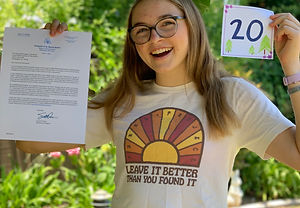OUR PROJECTS

The Range of Light National Monument
Our primary goal is to protect the federal land between Yosemite and Kings Canyon National Parks by creating the Range of Light National Monument. We've been working on this project for more than seven years; it is endorsed by 153 businesses and organizations, 200 scientists, 20 members of the House, the Democratic National Committee and the California Democratic Party.
To learn more about this proposal, review our one-page summary sheet, our scientist sign-on letter, or reach out to us directly and get involved.

GOAL - Get Outside Adventure Leadership
Our Youth Outdoor Leadership (GOAL) program introduces disadvantaged youth from the Central Valley to natural areas for camping, hiking, and leadership training. We partnered with CCEJN, an environmental justice organization in Fresno to run the program. The Central Valley suffers through the worst air pollution and the highest levels of asthma in the nation; it also has the lowest levels of local parks and access to nature. Fresno’s concentrated poverty rate is also the highest in California. The GOAL program brings youth (age 12-24) from this community to nearby parks and wilderness areas.

College Internships & Mentoring
We run an internship program, which deeply involves students and youth activists in forging a positive future. Our interns work on all aspects of our programs, from campaigning to outdoor leadership training. Our focus is on developing their skills in the areas in which they have the most interest, so they are prepared for work or graduate school. We provide them with work experience and mentoring, so they can make informed decisions about their future. Our interns are compensated well and encourage to develop their unique skills and abilities. They have designed our logos, bumpers stickers, and social media campaigns, and have helped refined our leadership programs.

Spotlight on Fire Science: A Closer Look
Recent studies using satellite data are finding that our managed forests are less fire resilient, not more. That is, our least-managed forestlands (correcting for forest type, topography, and climate variables) are our most firesafe, and the forestlands we manage the most burn with the highest severity (e.g., Bradley, et al. 2016). This counter-intuitive result is occurring because current land-management theory is incomplete, focusing nearly exclusively on forest fuel loads, and omitting one of the primary factors influencing wildfire behavior, namely, the role atmospheric motions (wind) play in supplying fresh oxygen to an evolving wildfire. Recent numerical fire-simulation work definitely shows this effect and demonstrates its critical importance (Atchley et al. 2021; Coen et al. 2020).
To address this potentially volatile situation, Dr. Joseph Werne has partnered with the Conservation Biology Institute to co-lead a diverse group of experts in rapidly developing an action plan that integrates all of the best available fire science to aid land-management decision making.
